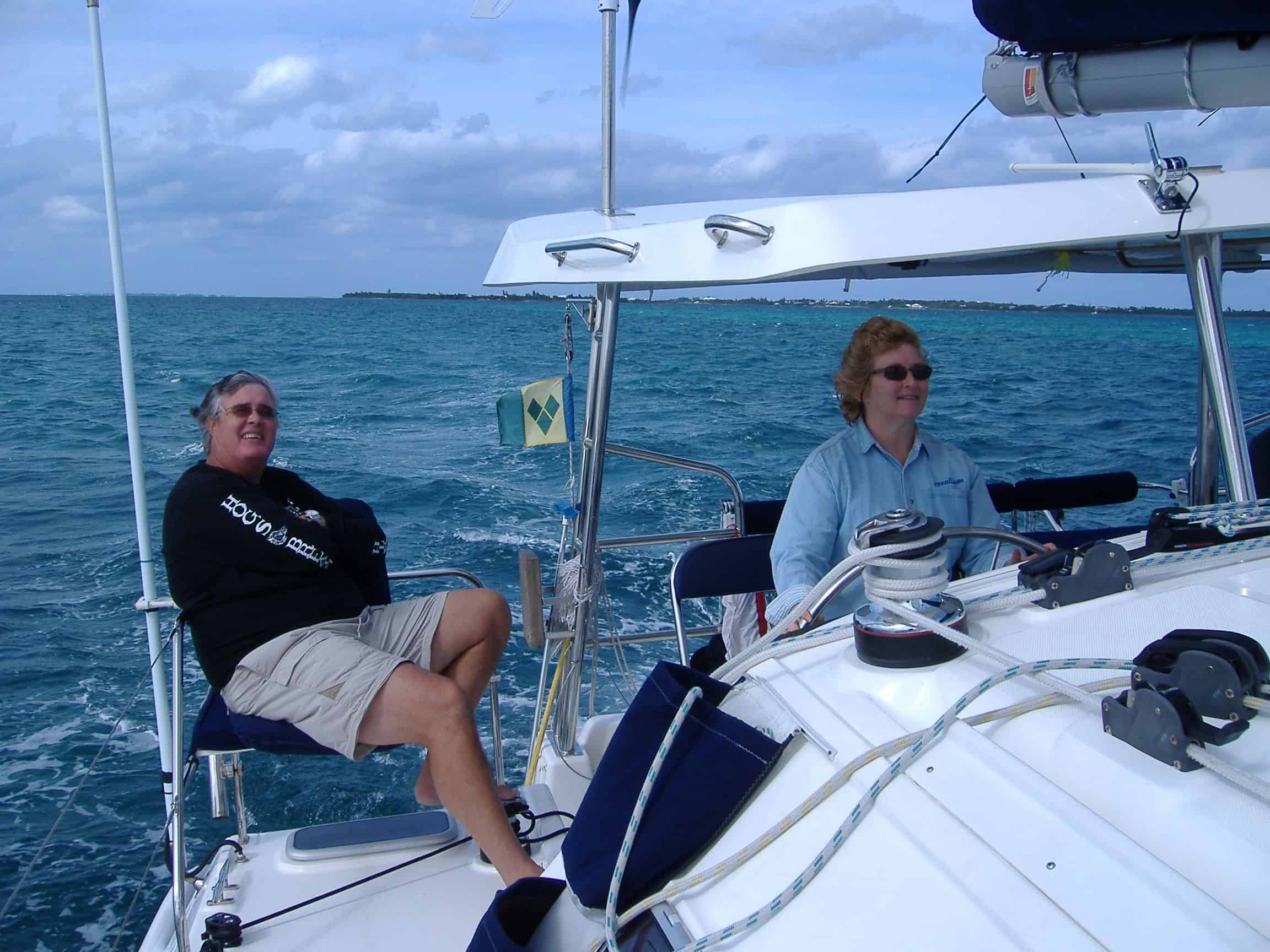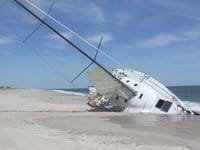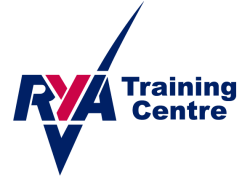 We have all heard the saying: Proper Planning and Preparation Prevents a Piss Poor Performance. Well, anyone who has ever done long passages or even just a day sail, knows that things can go wrong fast on a sail boat. So we always plan for the worst and hope for the best! We never leave the dock without checking systems, emergency gear, food and fuel supplies and we absolutely know what is expected of each of us in emergency situations. One can’t always plan for everything but don’t get caught by your own stupidity i.e. not filling water tanks!
We have all heard the saying: Proper Planning and Preparation Prevents a Piss Poor Performance. Well, anyone who has ever done long passages or even just a day sail, knows that things can go wrong fast on a sail boat. So we always plan for the worst and hope for the best! We never leave the dock without checking systems, emergency gear, food and fuel supplies and we absolutely know what is expected of each of us in emergency situations. One can’t always plan for everything but don’t get caught by your own stupidity i.e. not filling water tanks!
Here are a few points to keep in mind before casting off
Always have a backup plan
Have redundancy on as many systems on the boat as you can. For instance, if your engine breaks down, you could always use the dinghy to steer the boat into harbour or if the fresh waterpump does not work, have a second one in line or have a handpump set up. In addition to plotting our course on our Raymarine E120 Chartplotter, we always plot ourselves on a paper chart when doing long passages and we have a spare handheld GPS with fresh batteries as a back up. Those are but a few examples of backup systems that could be a lifesaver.
Prepare for the worst
If you had to abandon ship, or if the rig came down, what is the first thing to do? Play out these and other scenarios and know what your fist reaction should be for each situation. Trying to google “plugging hole in hull” while trying to bail out water gushing into the boat, is not the recommended procedure! Know where your hand bilge pumps and fire extinguishers are located. Know how to do man overboard recovery (MOB) and crash stop.
Keep it simple
You should be able to diagnose and fix or at least jury rig any of the vital systems on board until such time as you can employ a professional, so the simpler the better!
 Be aware of your surroundings
Be aware of your surroundings
Navigational hazards, wind, clouds and sea state can tell you much about conditions coming up. Learn about cloud formations, prevailing winds, ocean currents and wave action and what it means. Make sure your sail plan is suitable for conditions – do not wait for conditions to change before you change your sail plan – anticipate possible conditions. It’s easier to let out sail than it is to reef it in! If you think the sails should be reefed, it should already have been done!
Fog could be a disastrous hazard…as was the case for this boat stranded on the beach shown at left.
Be clear about crew responsibilities
The captain is responsible for the safety of the vessel and the crew and should be absolutely clear about who does what and when so that if an emergency arises, that there should be no doubt as to what is expected from each crew member.
Check and double check your gear and know where everything is stowed
It is good practice to check things like your engines, all systems, electronics and sails, running and standing rigging before you do a long passage. Make sure that your anchor is tied to the boat…don’t laugh, we have seen many people throw their anchors overboard! Remember, an anchor is part of your emergency gear. Never leave any piece of equipment “un-repaired”. Everything on board must work. It will be that one piece of equipment that you meant to repair but never did, that you will need in an emergency. It could save a life or your boat!
Make a checklist
Go through your checklist before you leave and make sure all items are checked off, e.g., water tanks full, diesel tanks full, dinghy fuel full, propane gas full, more people have left the dock with empty water tanks than you can imagine because the one guy “thought” the other guy was supposed to do that. Every crew member should be assigned a task or tasks and the captain should double check.
File a flight plan
Plan your trip and get the paper charts and pilot books (if available) for the region you will be sailing in and get as much information about navigational hazards and weather conditions as you can. Let friends and family know what your plans are, where you are going and when you will approximately arrive. Adjust as needed -we do not always follow the exact route that we had planned.
Test communications equipment
Make sure that the battery for an EPIRB is fresh, make sure the VHF and SSB radios work and you know how to operate both as well as any other equipment if you have it like our Iridium satelite phone.
10. Plan for survival and first aid – make sure that the liferaft is in date, that it is accessible and that you know how to deploy it. Make sure everyone knows where the life jackets, survival kit and EPIRB is stowed. Get a comprehensive medical kit and Captains Medical Handbook and do a refresher course on CPR.
Sail With Us to Learn


Week-Long Liveaboard Courses
Rare RYA Classes & Certifications
Catamaran Guru’s real-life practical methods combined with up-to-date sailing theory in lessons aboard recent model catamarans…or your own boat!
Prepare for certifications or take the first step aboard to embark on your dream life of boat ownership or cruising
Classes in S Florida and the Bahamas.





